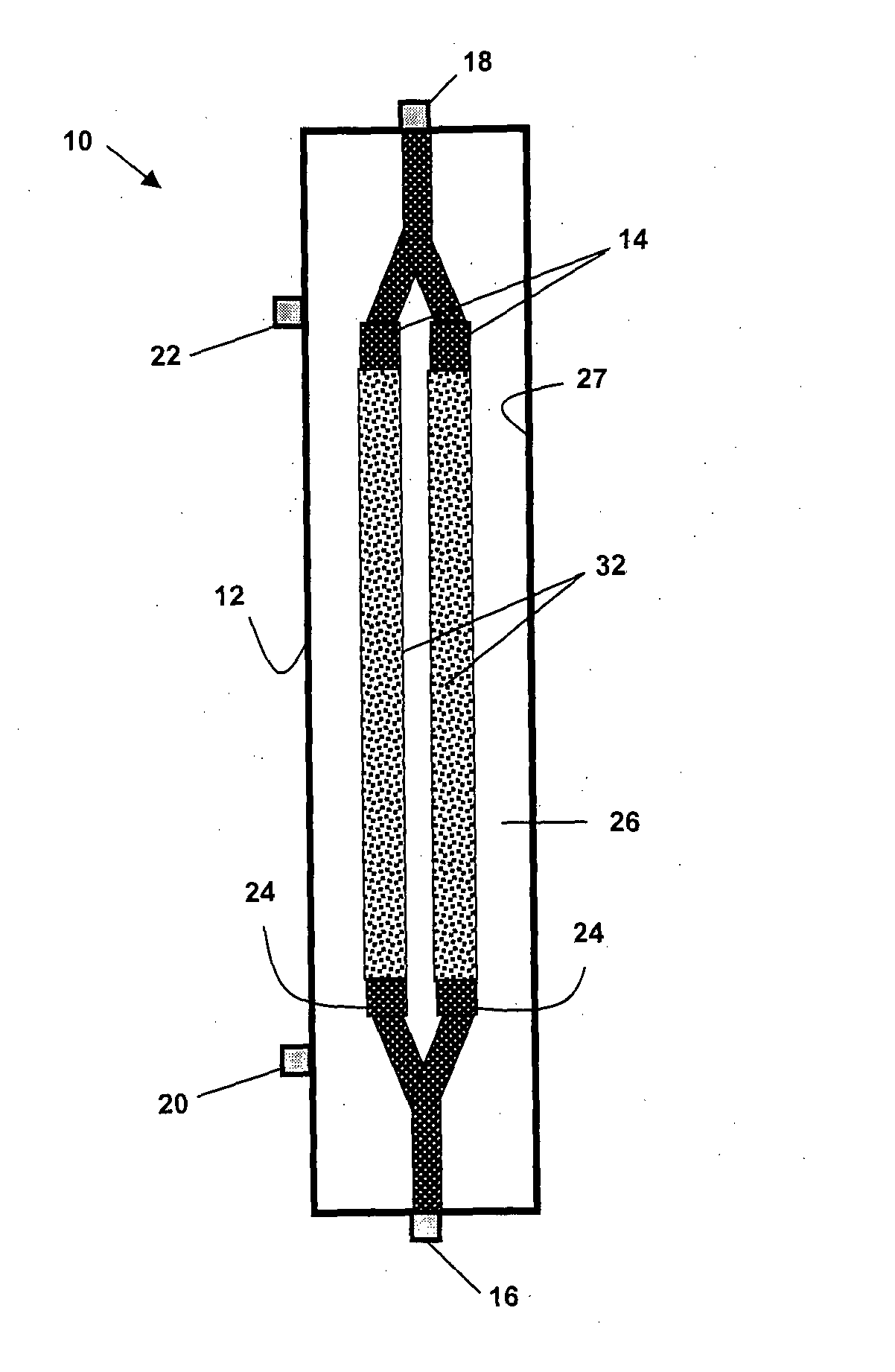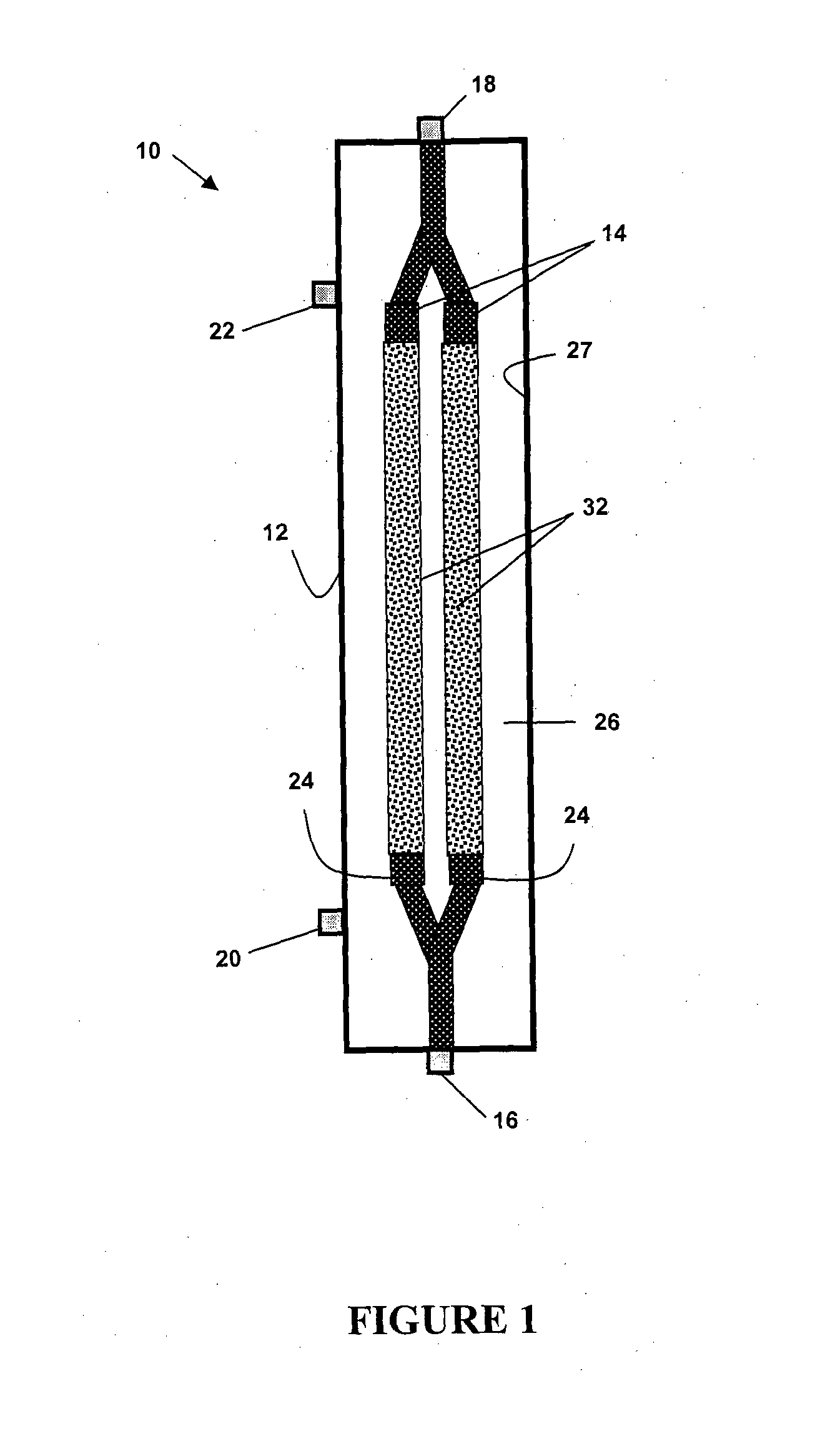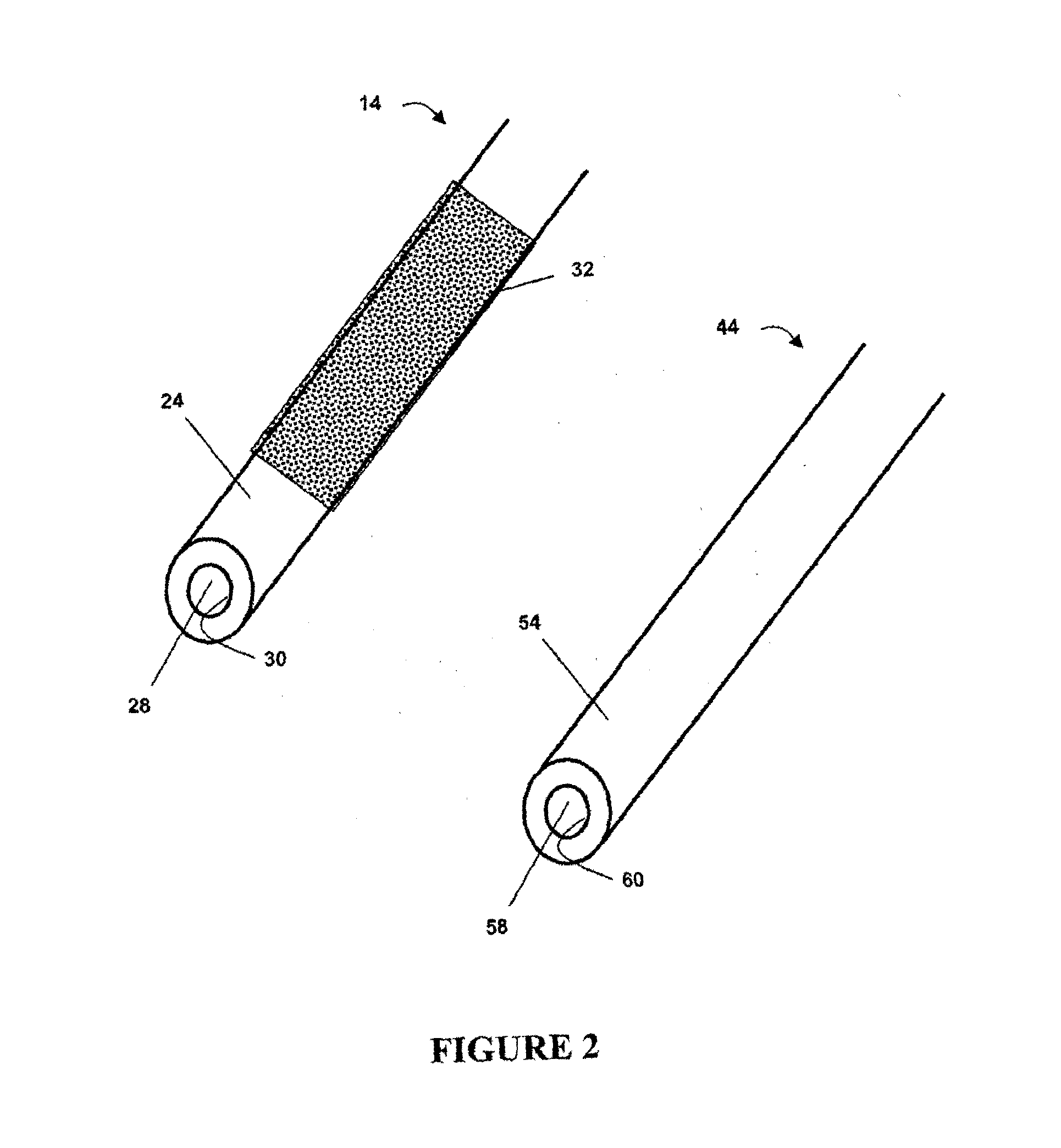Bioreactor unit for use in bioartificial kidney device
a bioreactor and kidney technology, applied in biochemistry apparatus, biochemistry apparatus and processes, water/sludge/sewage treatment, etc., can solve the problems of increased platelet adhesion, increased platelet adhesion, and inability to optimize haemocompatibility, so as to improve platelet adhesion, membrane clogging and thrombosis
- Summary
- Abstract
- Description
- Claims
- Application Information
AI Technical Summary
Benefits of technology
Problems solved by technology
Method used
Image
Examples
example 1
[0110]A novel bioartificial kidney was designed in an attempt to improve upon various properties of existing devices, including haemocompatibility and cell performance. An notable feature of the novel design is confinement of the blood to the lumina of the hollow fibre membranes; such a feature avoids exposure of the blood to the non-haemocompatible outer surfaces of hollow fibre membranes, in contrast to the design of previous bioartificial kidneys. In the novel BAK design, the rough outer surfaces of the hollow fibres were used as substrate for cell growth.
[0111]The results show that commercial hollow fibre membranes can be directly applied in the bioreactor when human primary renal proximal tubular cells are grown in the above-described configuration, and no coatings are required for the formation of robust and functional renal epithelia.
[0112]Furthermore, the results demonstrate that the bioreactor unit produces significant amounts of interleukins. This result helps to understan...
PUM
 Login to View More
Login to View More Abstract
Description
Claims
Application Information
 Login to View More
Login to View More - R&D
- Intellectual Property
- Life Sciences
- Materials
- Tech Scout
- Unparalleled Data Quality
- Higher Quality Content
- 60% Fewer Hallucinations
Browse by: Latest US Patents, China's latest patents, Technical Efficacy Thesaurus, Application Domain, Technology Topic, Popular Technical Reports.
© 2025 PatSnap. All rights reserved.Legal|Privacy policy|Modern Slavery Act Transparency Statement|Sitemap|About US| Contact US: help@patsnap.com



